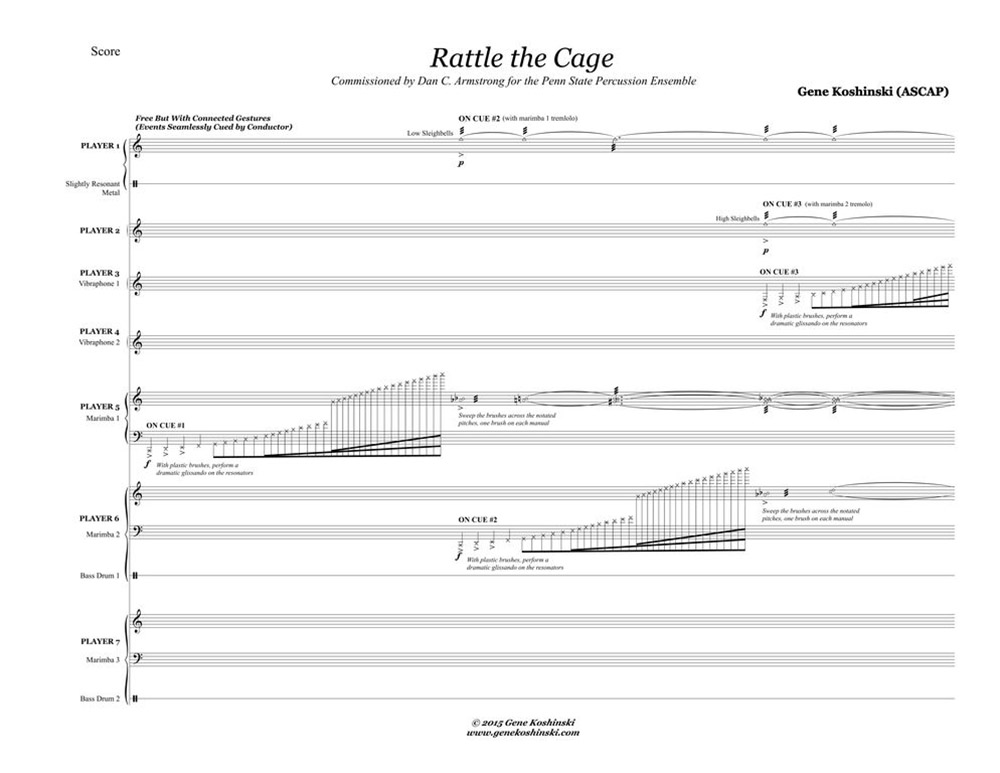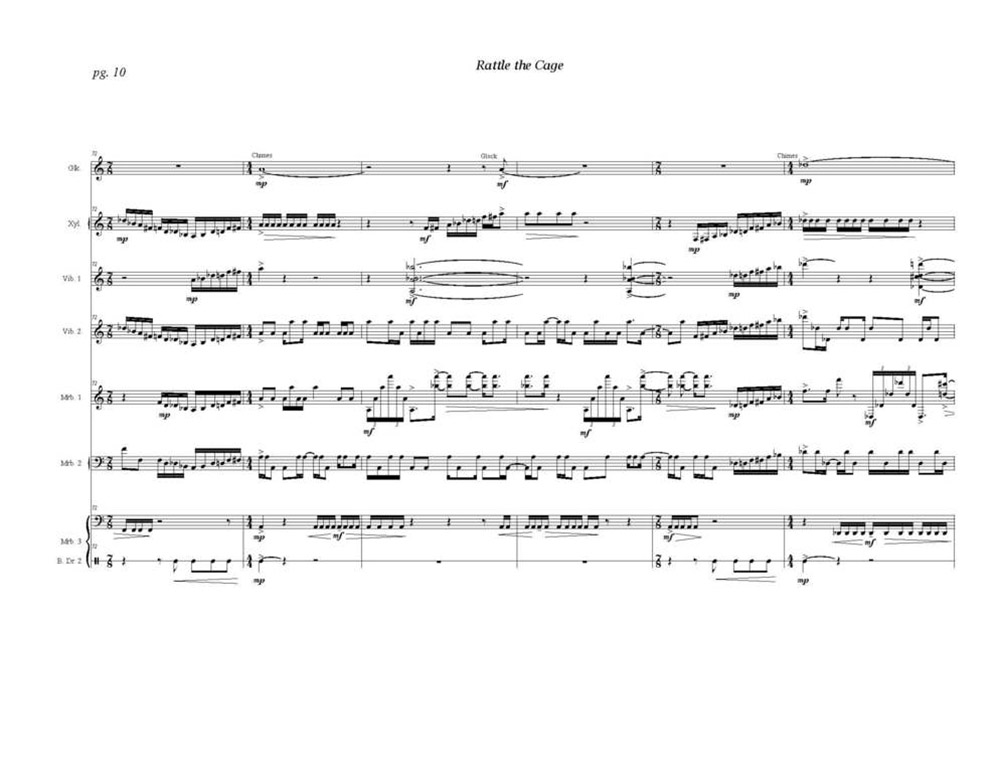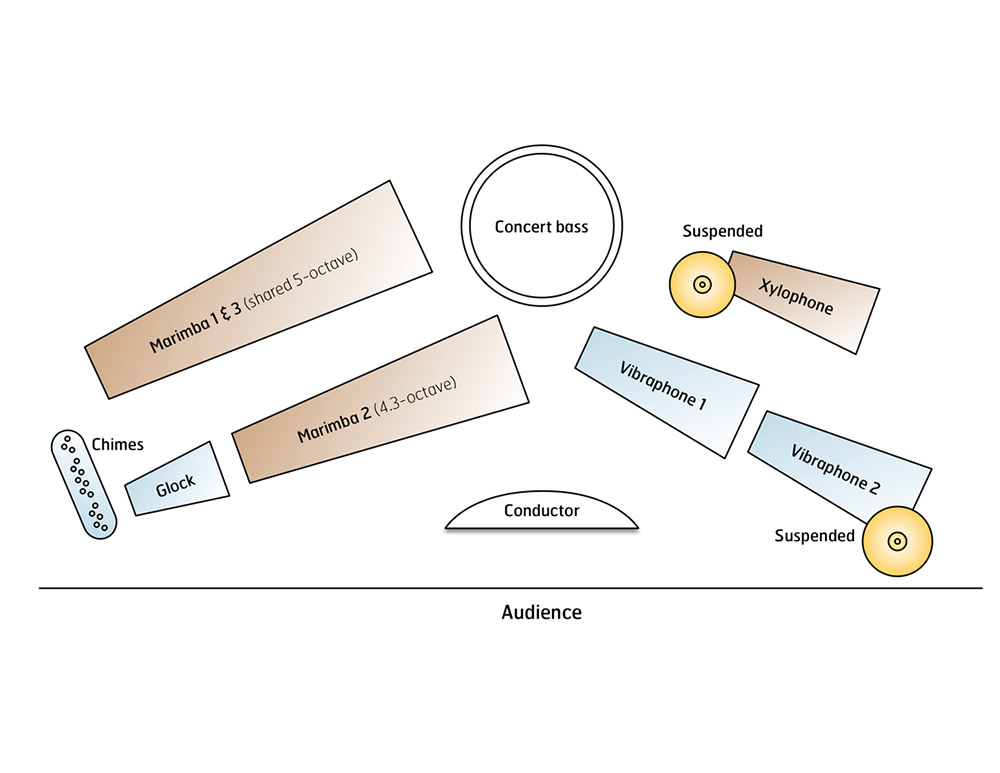Rattle the Cage (2015)
Available at TapSpace (www.tapspace.com)
Commissioned by Dan C. Armstrong for the Penn State University Percussion Ensemble
Glockenspiel, Chimes, Xylophone, 2 vibraphones, 2 marimbas—(1) low A, (1) low C, Drums (concert bass drum), Cymbals (dark/thin suspended cymbal), Accessories (brake drum, glass wind chimes or mark tree, 4 small/graduated sets of bells or sleighbells, hand crank or digital siren, 4 pairs of plastic brushes)
- Performed by
The University of Minnesota Duluth Percussion Ensemble - Gene Koshinski, director.
Performers seen here: (first row L to R) Marc Hill, Bryden Gollhardt, Chris Parks, Zach Wood, (2nd row L to R) Jonathan Sickerdick, Sarah DeYoung, Elliot Anderson, and Annie Chernow. Gene Koshinski, conductor
My recent compositions have focused on exploring elements of timbre and texture and Rattle the Cage is no different. With this in mind, I made the conscious effort not to ignore familiar musical components such as melody, functional harmony, rhythm, groove, and counterpoint. When I was approached by Dan Armstrong to write a work for keyboard percussion ensemble, I immediately had ideas of exploring these typical instruments through the use of extended techniques and varied implements as well as supplementing their palette with a small collection of non-pitched percussion instruments. After much experimenting, I decided on utilizing 3 marimbas, 2 vibraphones, xylophone, glockenspiel, and chimes mixed with a collection of non-pitched bells, siren, cymbals, brake drum, and bass drum (7-8 players total).
Rattle the Cage is not a program piece - it is instead an abstract exploration of the musical elements mentioned above (most notably timbre and texture). The bulk of the piece is rooted in the (0,1,4) pitch set (for example A, B♭, D♭), which provides much of the “germ" material, which is then developed and elaborated into something more complex. The title is taken from the sounds evoked throughout the composition.


